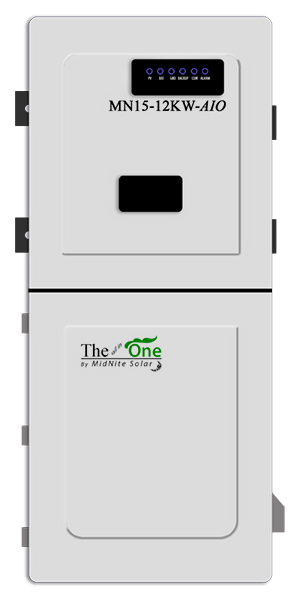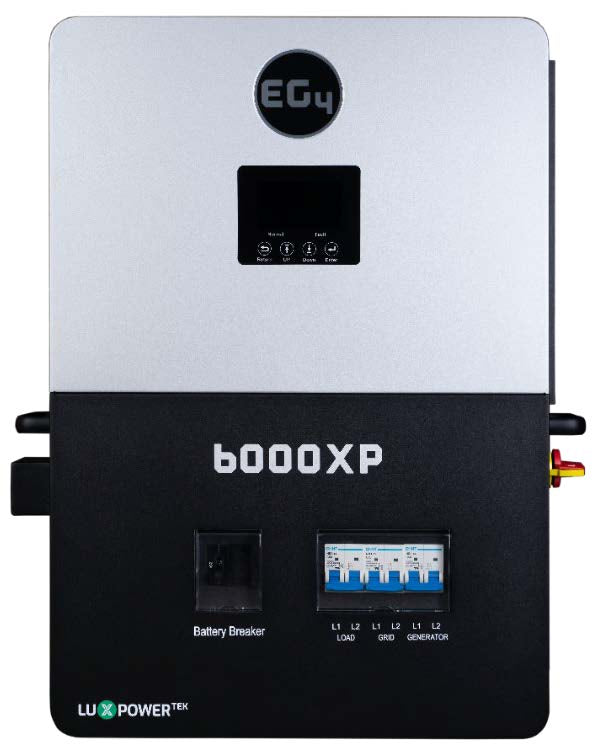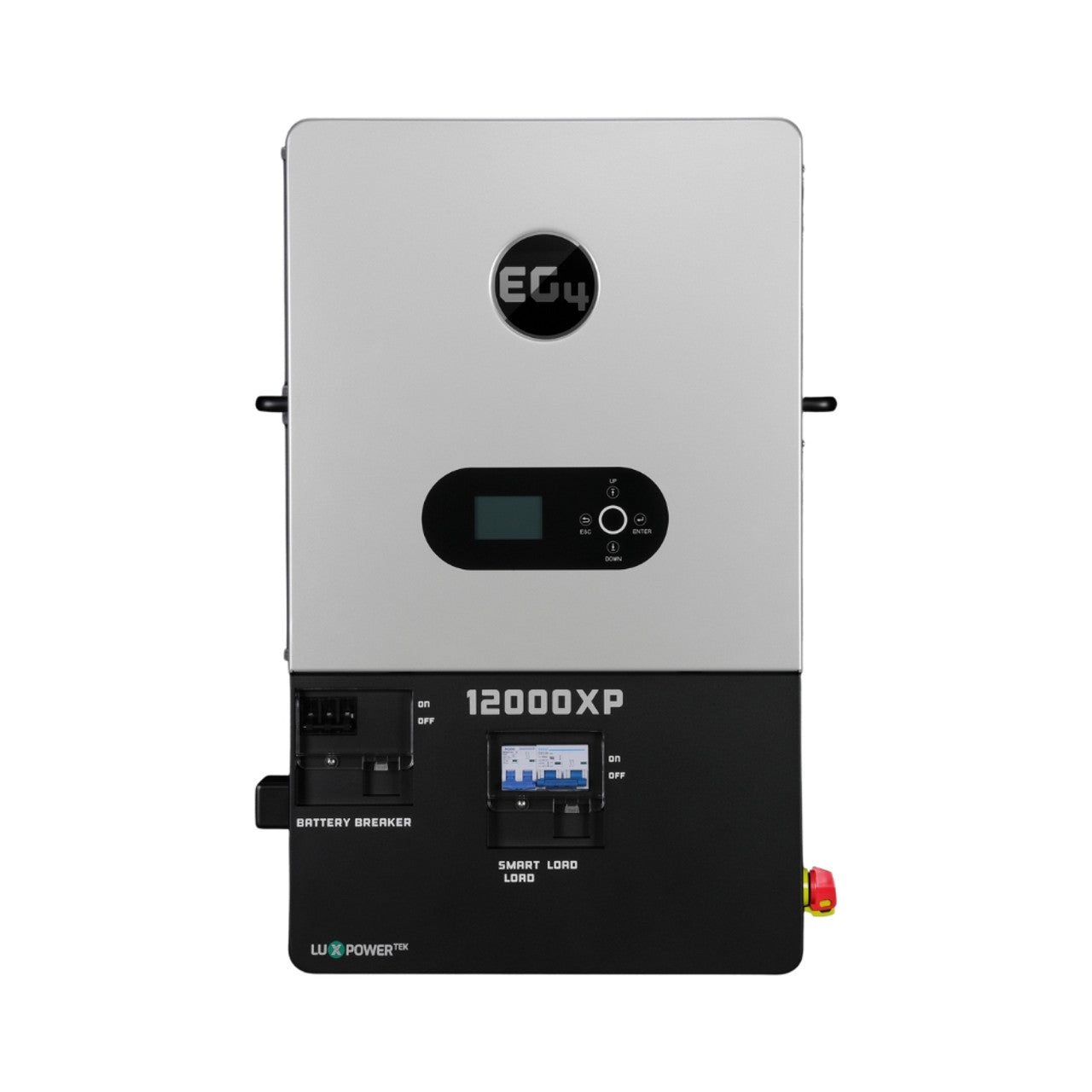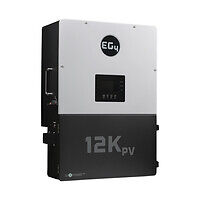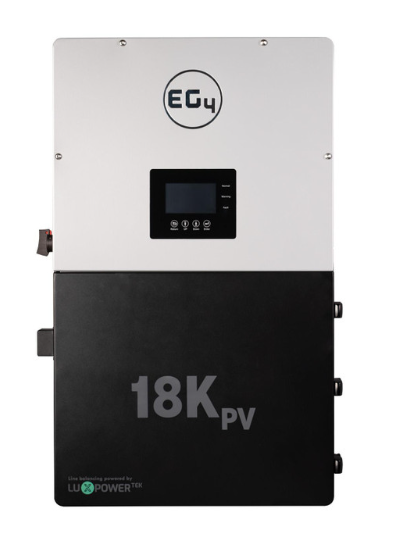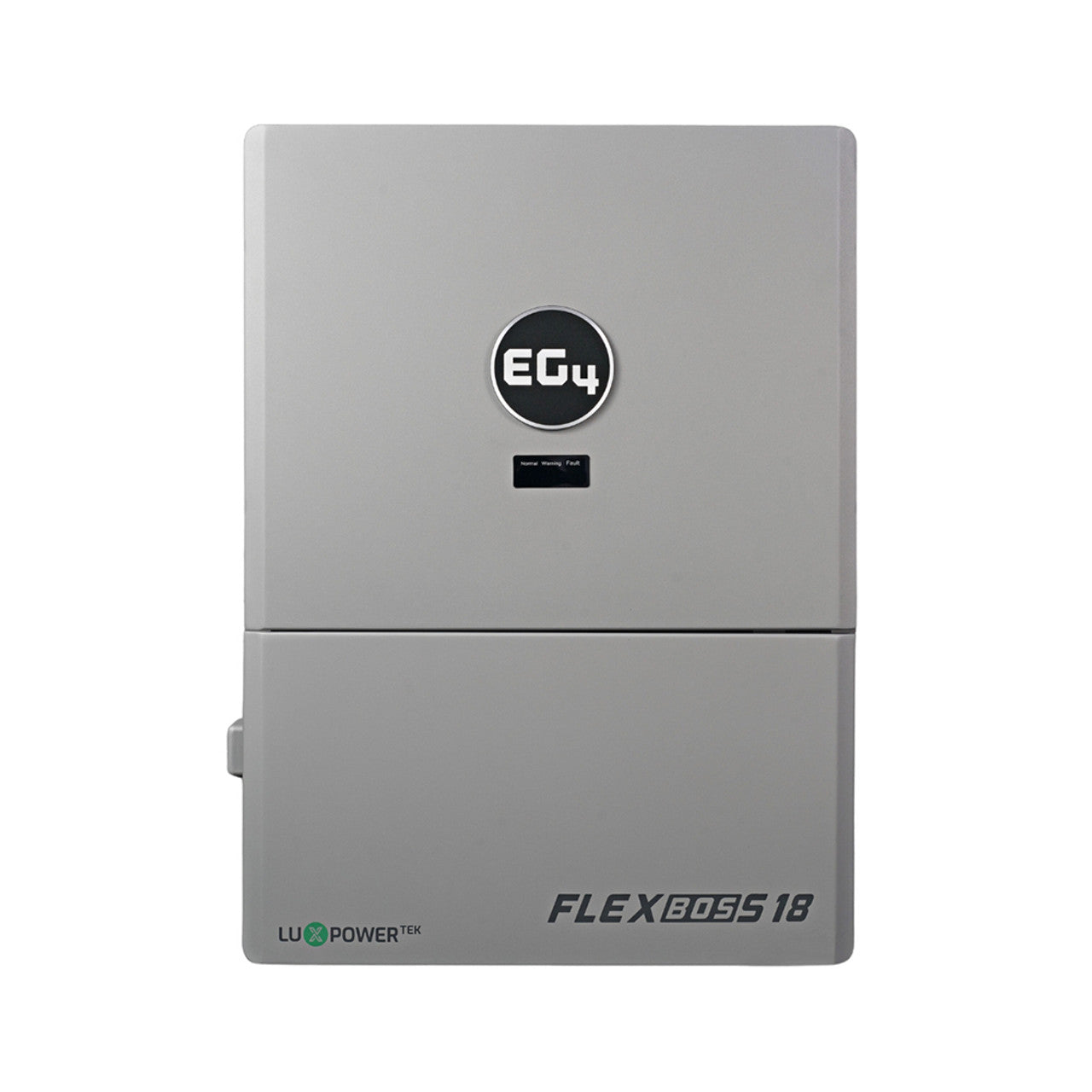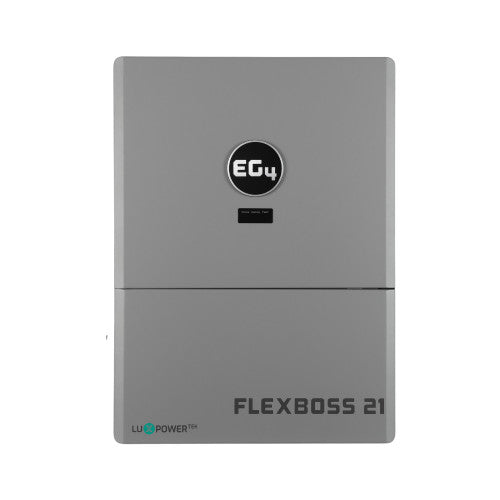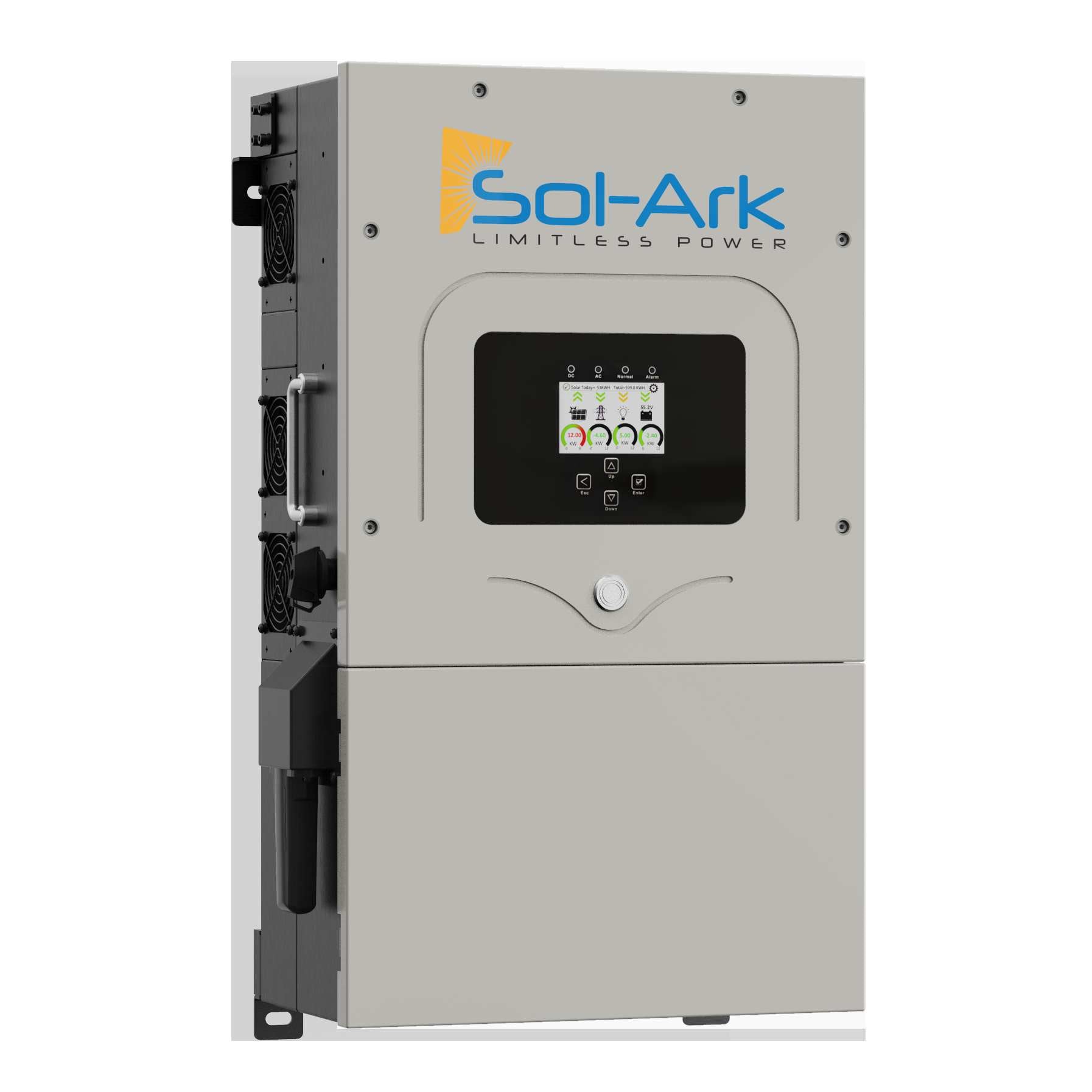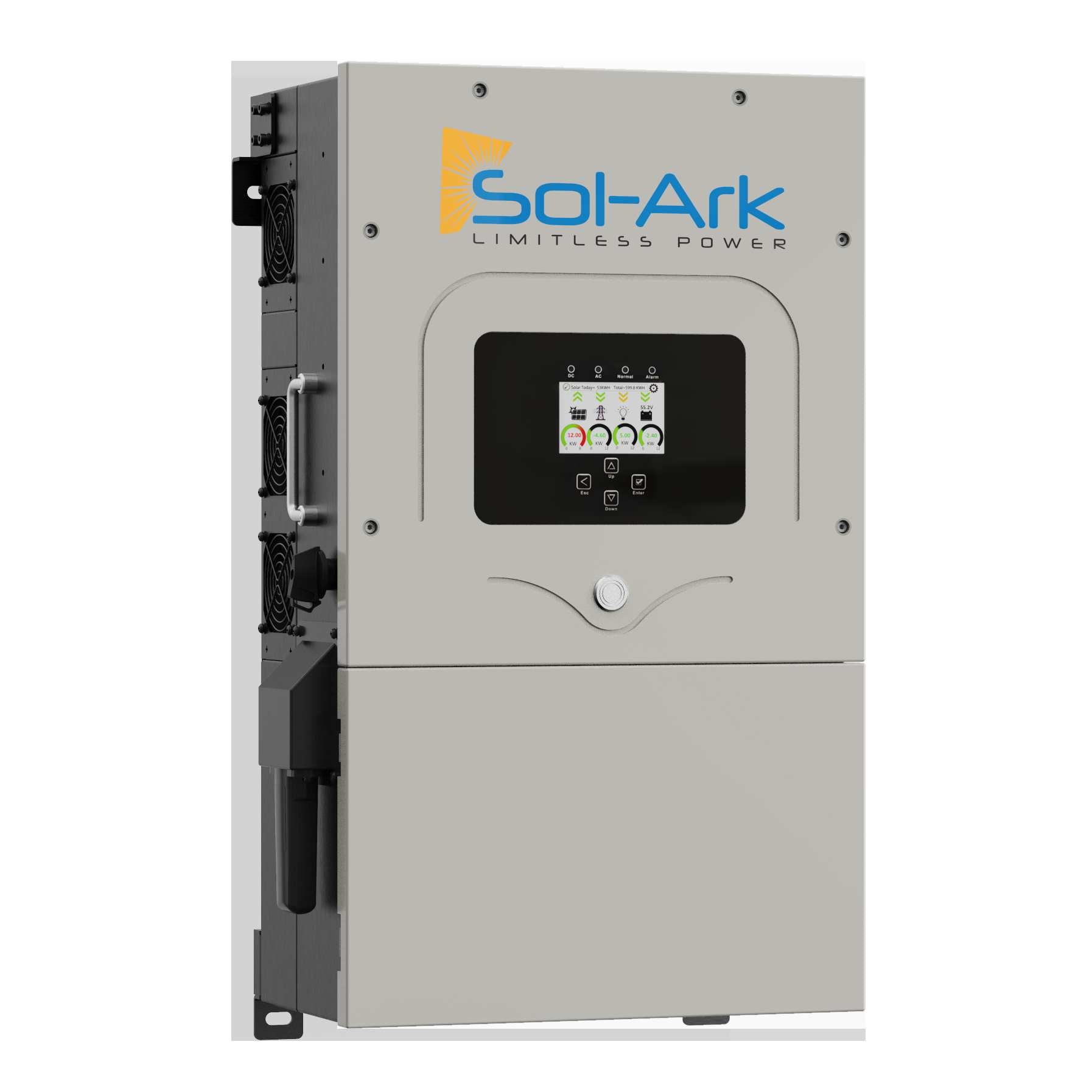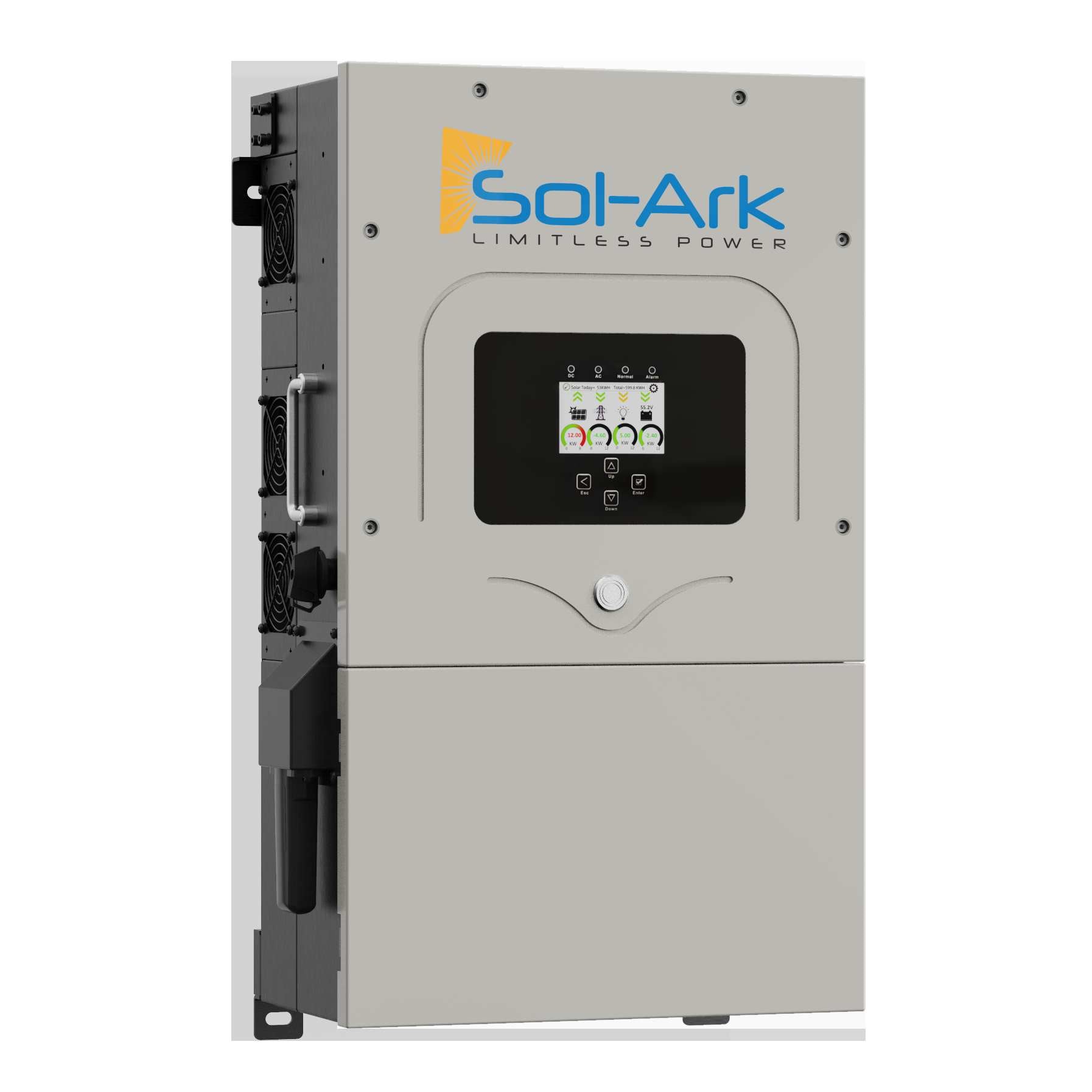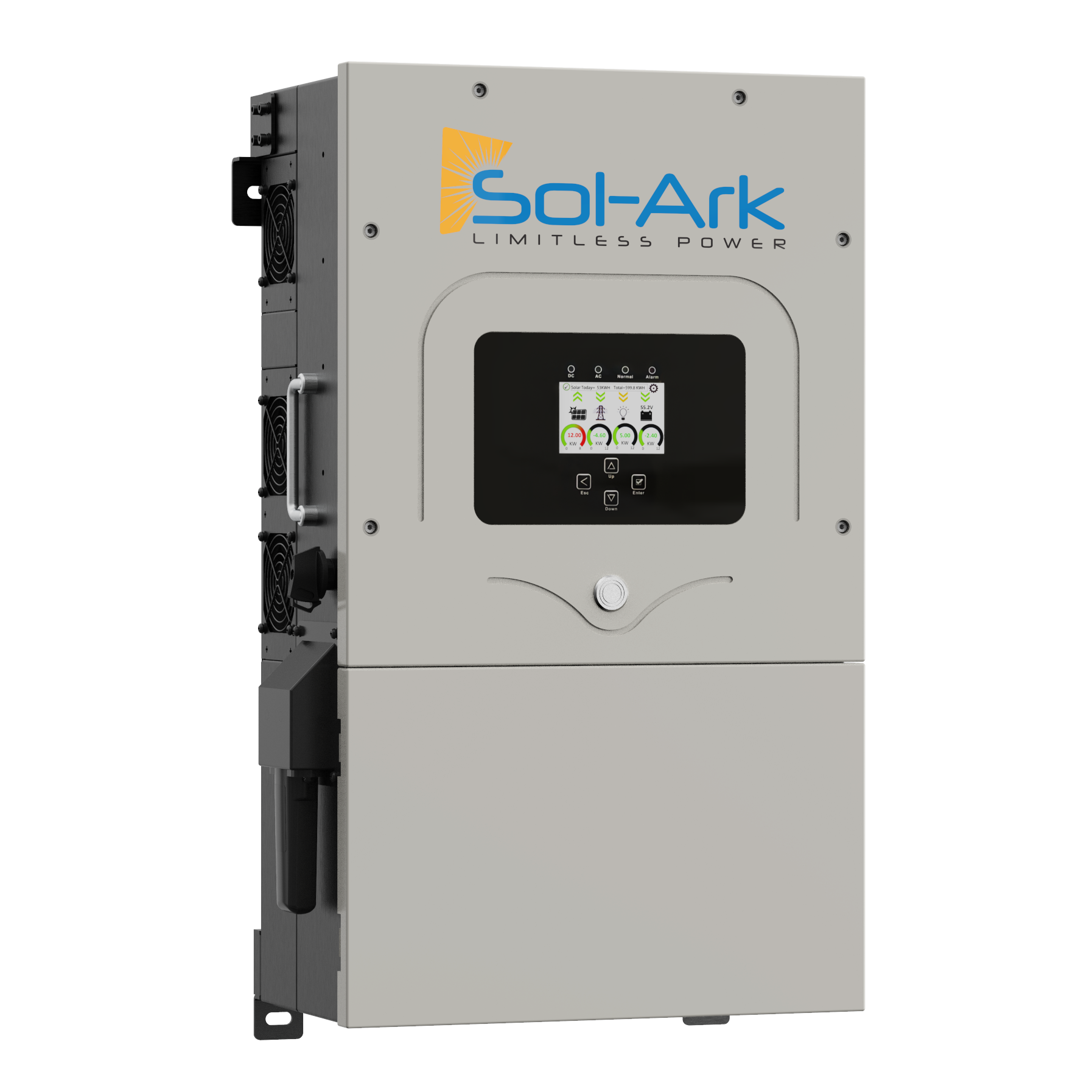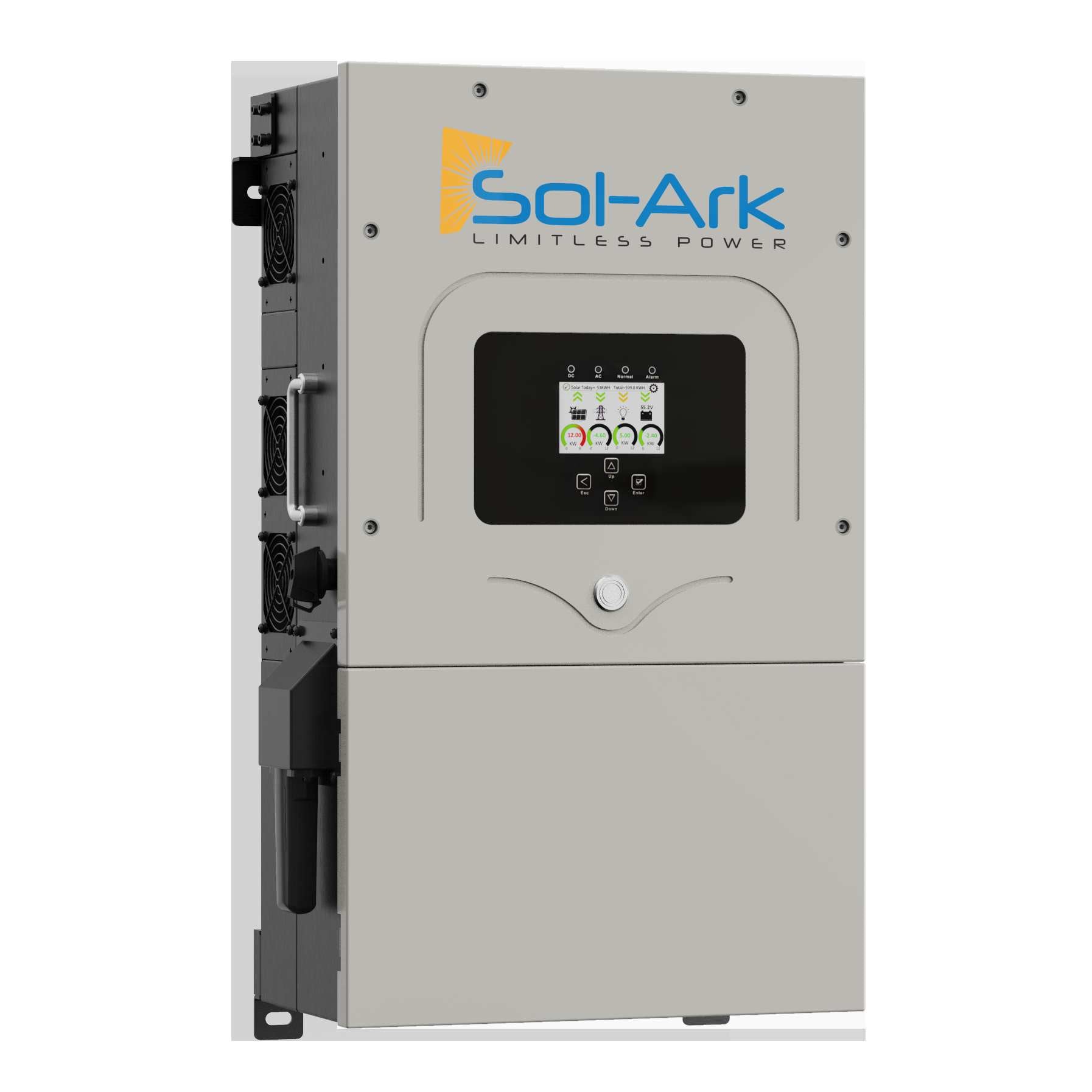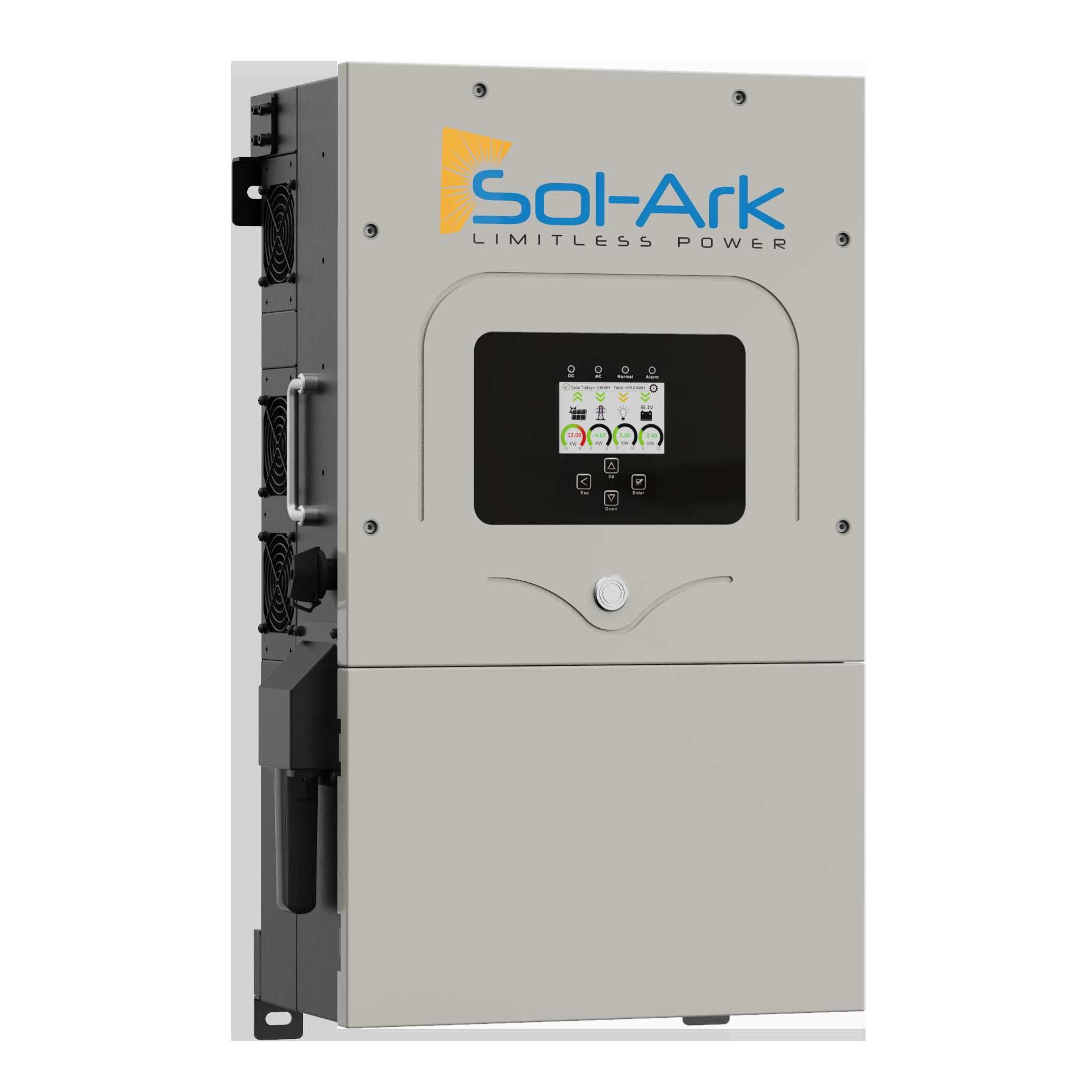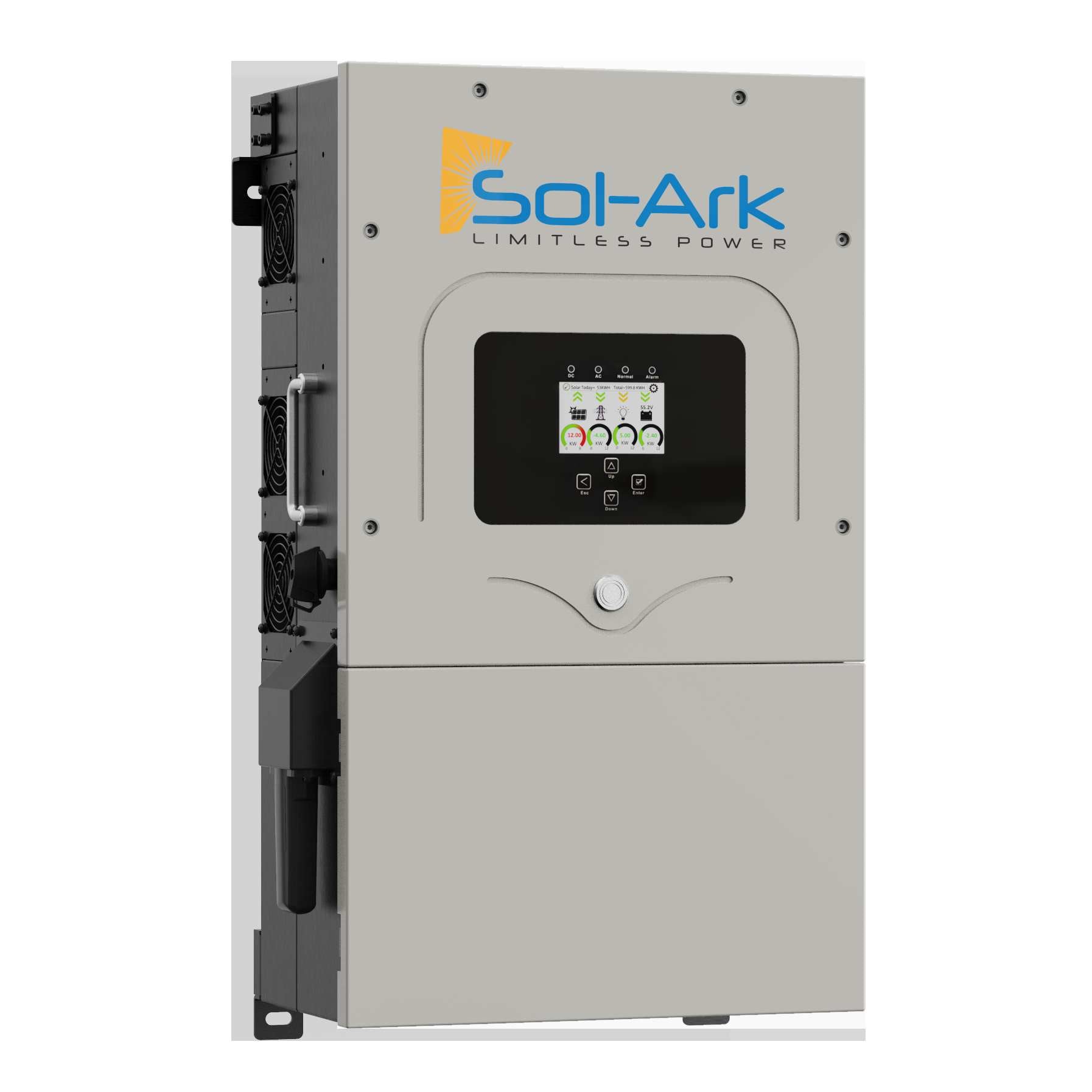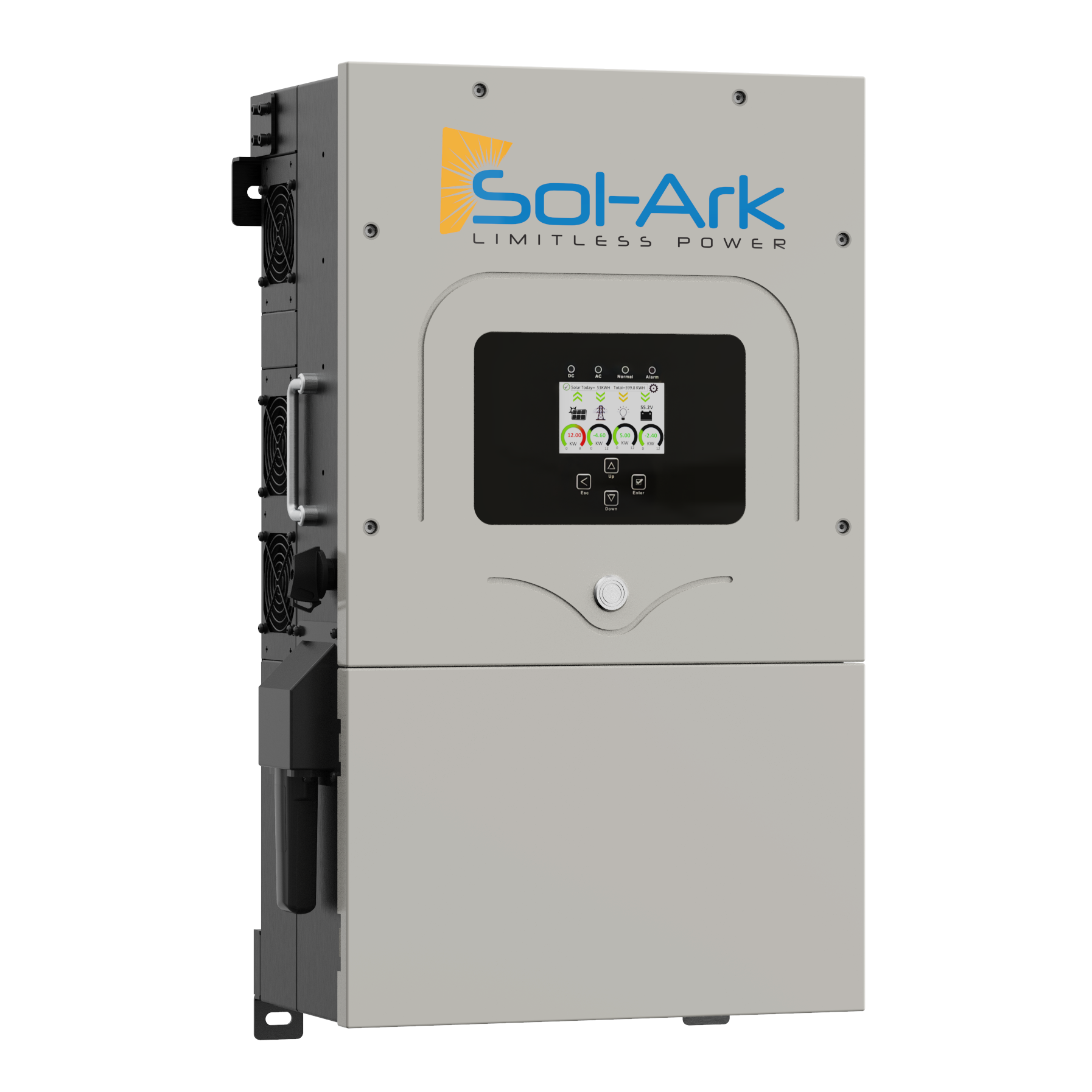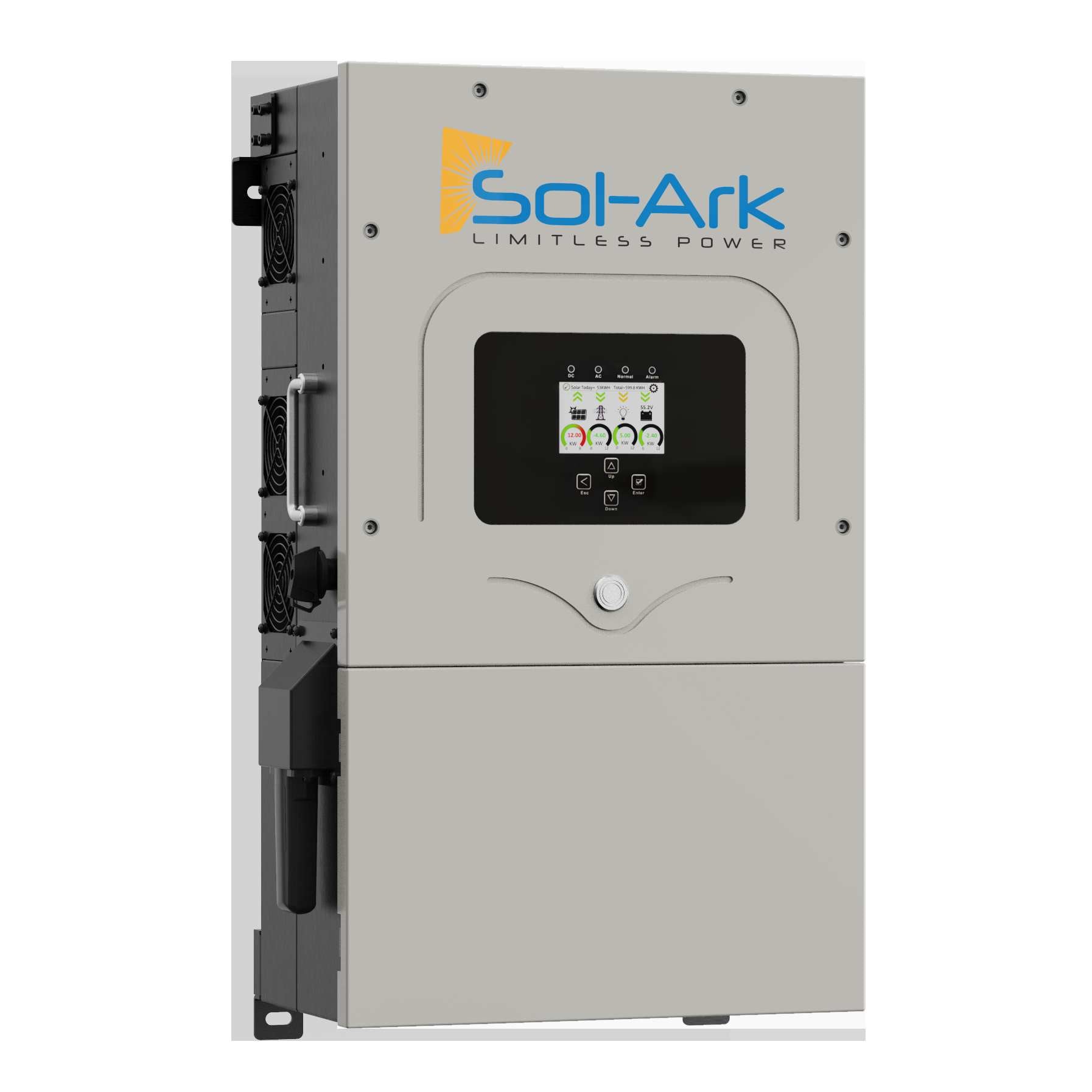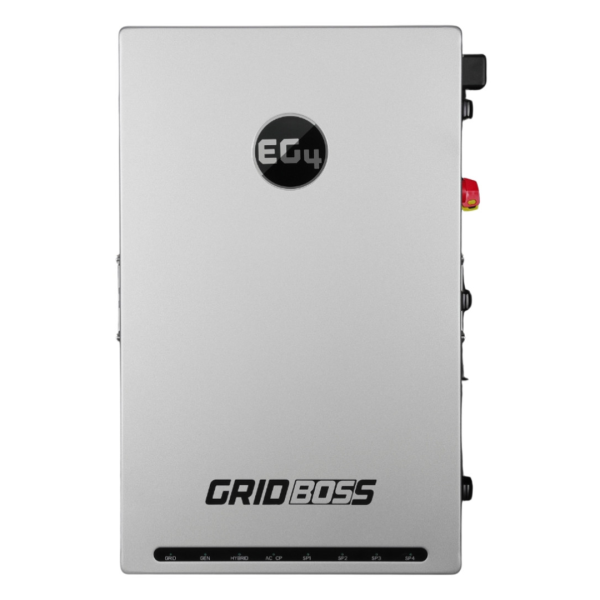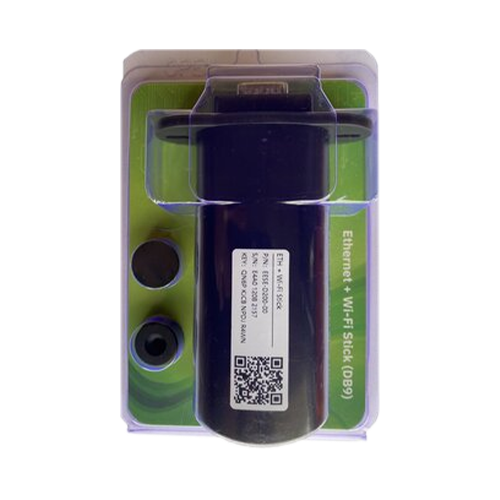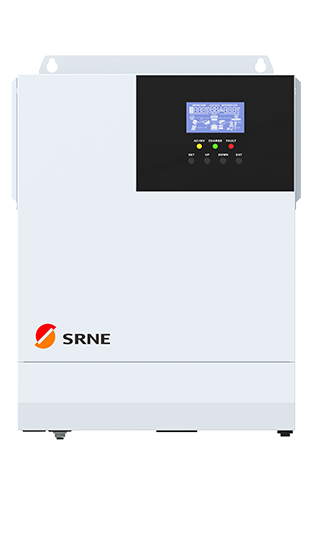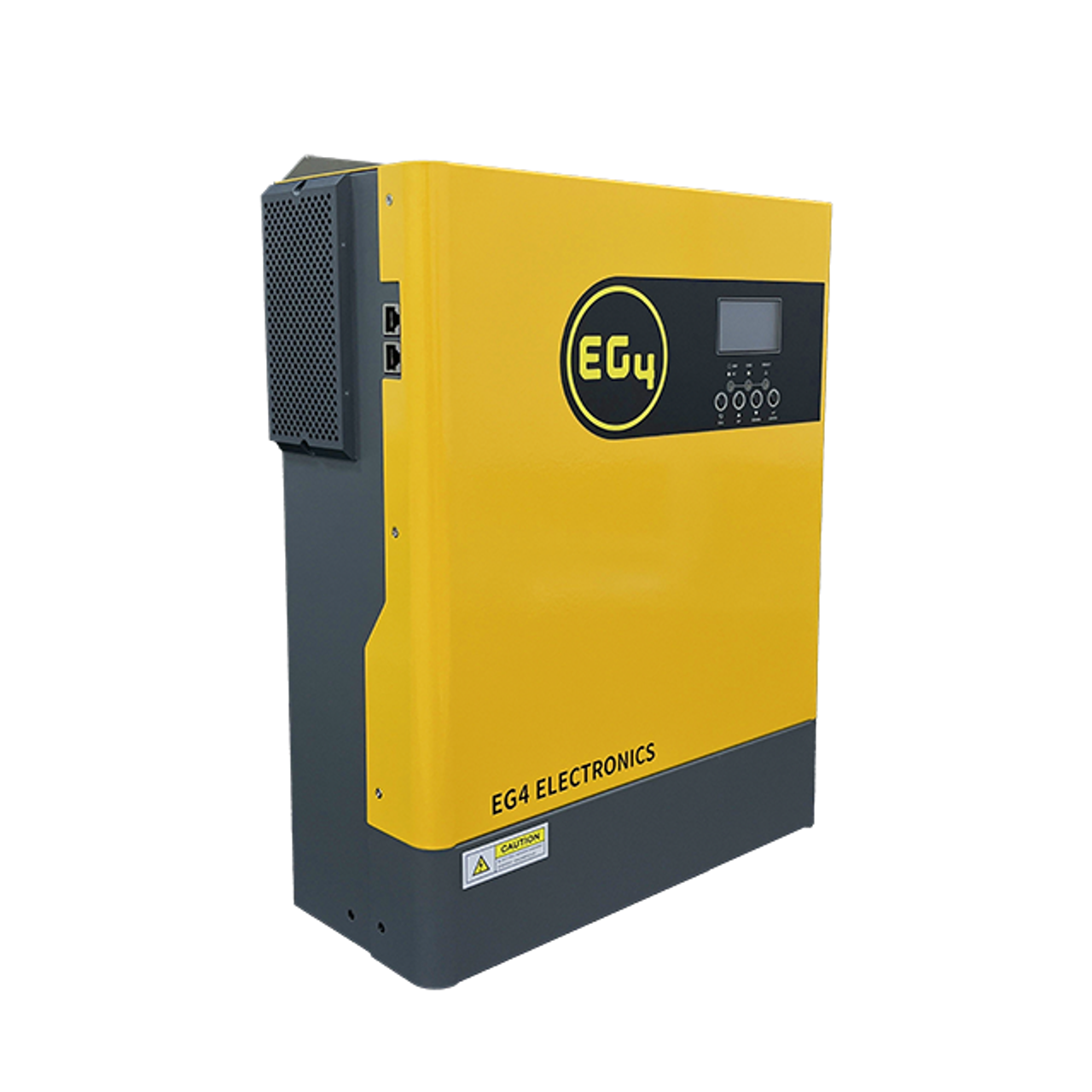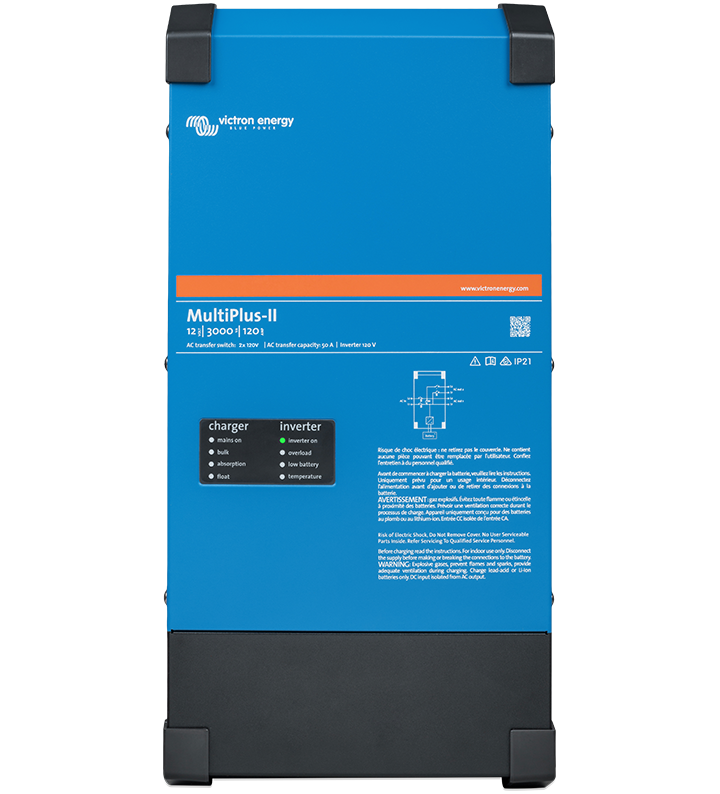Hybrid Inverters
Grid Interactive Inverters for Backup Power Applications
Grid interactive inverters, also called dual function or hybrid inverters, can export power to the utility grid, but can also supply emergency backup power for critical loads during a grid outage. These inverters typically use a battery bank for energy storage, most will not operate without batteries, and include an automatictransfer switch that enables them to safely operate off-grid during a blackout.
The grid interactive inverter is connected to the battery bank (usually 24 or 48 VDC), an AC sub-panel for critical loads, and the building’s utility entrance load center. The battery bank is charged by the PV array connected through a charge controller (see Charge Controllers). Under normal conditions, it operates like any grid-tie inverter and will export any excess power produced by the PV array. During a grid outage, the inverter will automatically disconnect from the grid and supply AC power to the critical load subpanel by drawing energy from the battery bank and solar array.
When the outage is over, the inverter will automatically switch back to grid-tie operation and recharge the batteries. The OutBack Radian GS and the Schneider XW grid interactive inverters have split-phase 120/240 VAC output from a single inverter. The OutBack GFX and SMA Sunny Island inverters have 120 VAC output, but two inverters can be “stacked” for 120/240 VAC output.
The SMA Sunny Island is designed to interact with a Sunny Boy grid-tie inverter to create an “AC Coupled” power system. See the Sunny Island listing for more information.
It is important to note that a significant amount of energy is used to maintain the battery bank. For this reason, systems with battery backup typically provide 5 to 10% less energy (kWh) to the grid than equivalent grid-tie systems that don’t include batteries
The Xantrex XW series, and the OutBack GFX series inverters are primarily standalone inverters that can function as an intertie inverter at the same time, but with a lower efficiency than an inverter designed for grid-tie only. The new Xantrex XW is a grid-tie inverter designed to provide battery backup when the utility fails.
In summary, the inverter is connected to a battery bank, a sub panel for critical loads that will be powered during a power outage, and the house load center. If the utility is available, the inverter will supply the house loads from the utility. If the utility fails, the inverter will supply power to the loads from the battery. When the utility is available again, the inverter will switch the loads back to the utility, and recharge the batteries. If the batteries become fully charged by another power source, such as photovoltaic modules or a wind or hydroelectric generator, excess power may be sold back to the utility in locations where net metering is allowed.

